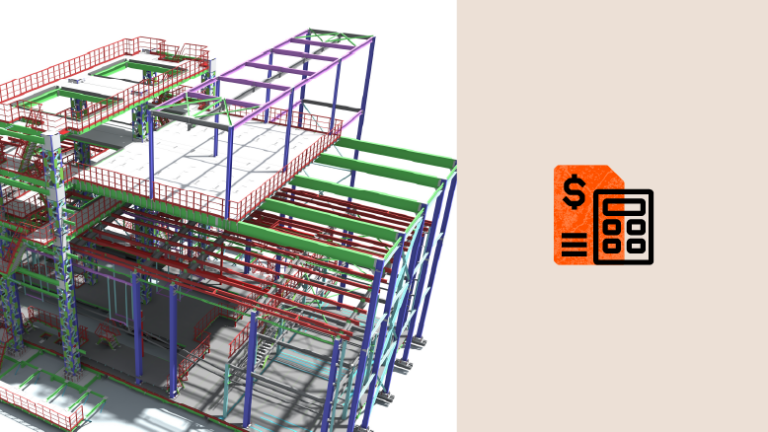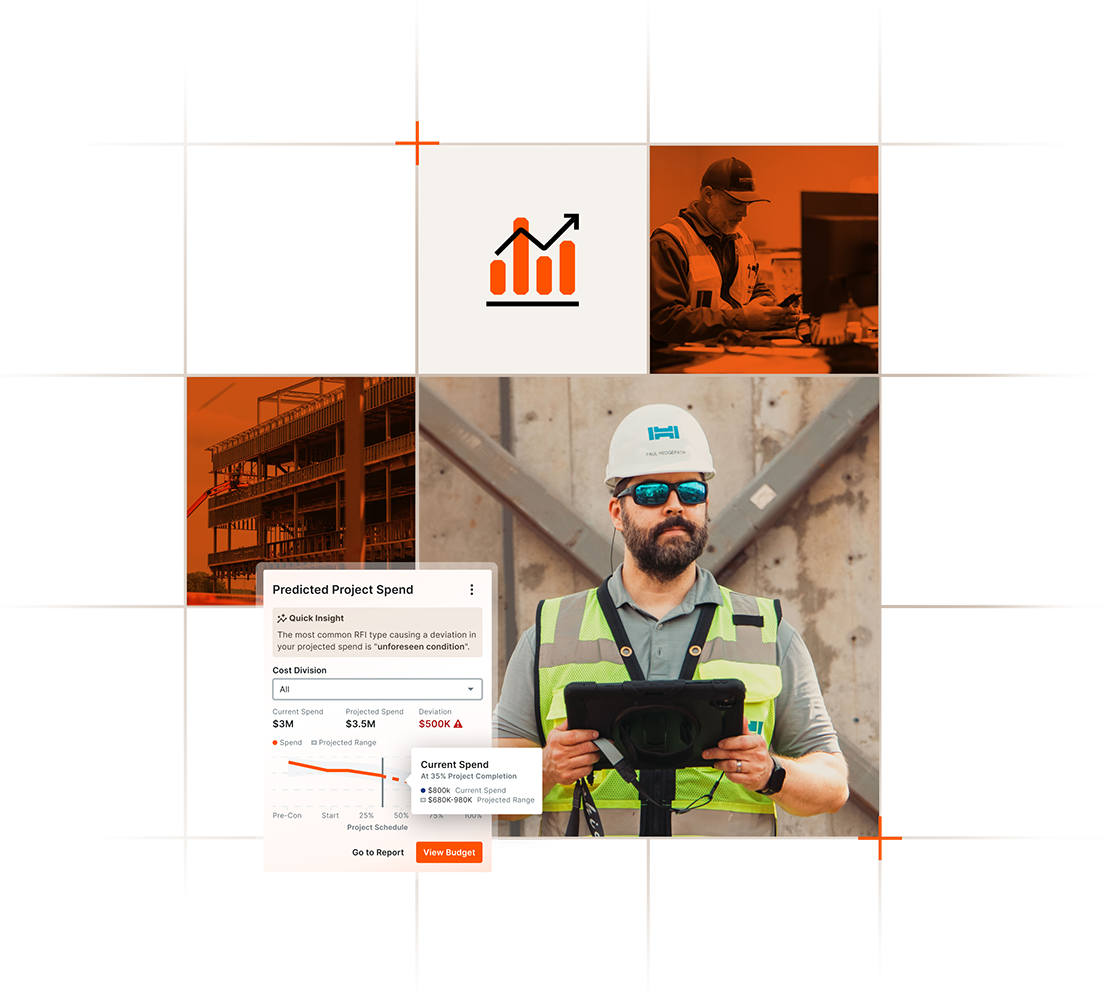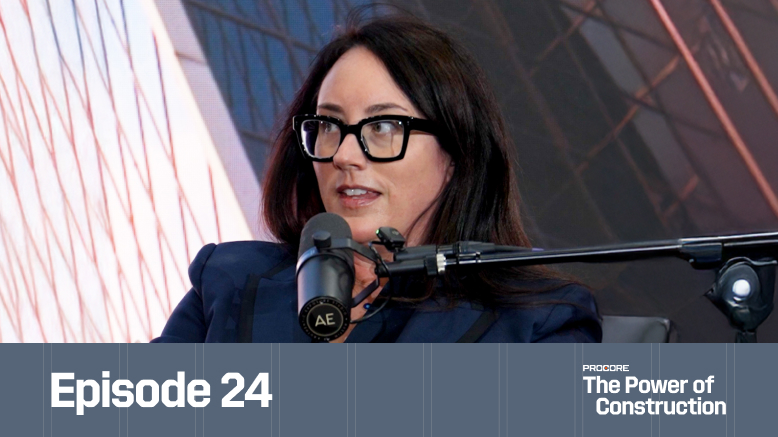— 9 min read
BIM for Construction Cost Control & Budget Management
Last Updated Oct 3, 2025
Adam Fairbairn
Enterprise Solution Specialist, BIM
Adam is a BIM solution specialist and Lead Solutions Engineer at Procore Technologies. He works ollaboratively with company owners, construction managers, general contractors, architects, engineers and specialty contractors to discover their needs and identify solutions to meet those needs.
Kacie Goff
Contributing Writer
87 articles
Kacie Goff is a construction writer who grew up in a construction family — her dad owned a concrete company. Over the last decade, she’s blended that experience with her writing expertise to create content for the Construction Progress Coalition, Newsweek, CNET, and others. She founded and runs her own agency, Jot Content, from her home in Ventura, California.
Last Updated Oct 3, 2025

As the construction industry advances in its digital transformation journey, building information modeling (BIM) is becoming increasingly common. Teams and individuals who push back against using the 3D model and its associated processes usually have one common complaint: cost.
Certainly, there’s some investment in BIM software, plus the training required to help team members use it. On the first project, companies might not see a return on that investment. But over time — and particularly as their BIM processes get more refined — building information modeling can deliver serious cost control and budget management advantages.
Table of contents
Using BIM for Budget Management in Different Phases
Most construction companies primarily deploy BIM in the run-up to groundbreak. That said, its usefulness starts much earlier in the project.
Early-stage Uses for BIM
Design teams increasingly use BIM from the beginning of a project, even as early as during programming. When design uses the model for feasibility studies, site planning and other early activities, it helps lay a good foundation for an on-budget project.
Sometimes, that model gets transferred to the general contractor (GC) and subcontractors. Other times, contractors create their own model from the drawings and specifications. Either way, deploying BIM in the project’s early stages helps with cost control in the following ways:
Estimating
When contractors attach the model to their cost catalog, it helps them rapidly create an accurate estimate for the project. Time is saved (reducing labor costs) and the risk of human error is minimized. This helps the contractor arrive at an estimate that closely aligns with the project, protecting their profit margin.
Some construction companies take a programmatic approach to leveraging the model for estimating. This practice is called 5D BIM.
Value Engineering
When contractors are involved in value engineering, BIM supports their efforts here. Leveraging the model for material cost analysis or energy modeling, for example, can help them identify areas to save cost without compromising quality.
Specifically, since mechanical, electrical and plumbing (MEP) are usually the biggest project cost areas, modeling these aspects of the project helps contractors value-engineer these expensive systems.
Design Review and Coordination, Including Clash Detection
Every construction project needs some level of review. The budget will include cost for design and constructability reviews (i.e., page turns). It might also include contingencies for any required design changes. Models can be useful to speed and streamline these reviews.
After page turns, the project gets turned over to the GC. Today, a lot of GCs feel like they’re continually chased by the construction schedule. That might make coordination seem like wasted time, since no physical activities happen on the jobsite during this planning process.
Taking the time to organize resources and activities, though, can help avoid confusion, delays and the need for rework. With a model in play, the work of coordination gets faster and easier. Teams can use BIM to perform automated clash detection, for example. This spatial coordination effort checks for conflicts between trade models. Building the project in 3D in a virtual environment also helps stakeholders visualize the project better, facilitating more sophisticated sequencing.
All of this helps to avoid rework, which can add thousands of dollars in costs for labor, materials and equipment, all while compromising quality. With rework, teams face the dual-edged sword of delays and cost overruns.
When done well, then, BIM makes design review and coordination faster, easier and more effective. With a BIM-backed planning effort, teams get tools to identify potential issues, then track and manage them in a streamlined, collaborative way.
During Construction
Once activities start happening on the jobsite, the model continues to be a useful cost control measure.
Anything teams can do to get a better understanding of where they stand in terms of progress is going to help them be more agile if they need to course-correct. BIM makes a difference here in two ways. First, it makes it easier to identify issues. Secondly, it provides data to help people make informed decisions about how to move forward.
BIM helps to accurately and proactively progress the project when teams compare the model against what’s been installed. This can happen via laser scanning, augmented reality (AR), some other reality-capture mechanism, or someone physically walking the jobsite and comparing in-place objects against the 3D model. This way, teams can regularly determine if they’re ahead, behind, or on track. If they’re behind, knowing earlier makes it easier to rectify the delay — and avoid additional costs, including the potential for liquidated damages.
BIM doesn’t just give teams a baseline to compare against to see if things are installed, too. It also helps them install those things correctly and validate that installation.
When teams have BIM access in the field, the model instructs them about how to do what when. In fact, connecting the model to technologies like AR can guide them through installation in an extremely precise way.
As a result, BIM helps specialty contractors make sure that their work aligns with the overall project. The model doesn’t replace the drawings and specifications, but adds another useful piece to help them see the full picture of the project. This, in turn, avoids rework and the potential for disputes about who should cover that cost.
Then, if the GC uses BIM to verify installation, it helps to further protect budgets. The earlier issues are caught, the cheaper they usually are to fix.
BIM Coordination, Collaboration & Change Order Management
Throughout the project, BIM supports collaboration among all parties as they handle any changes that can impact the budget.
Using BIM early helps the owner visualize the project, reducing the likelihood that they request changes down the line. Just as importantly, though, with processes like clash detection, it helps stakeholders make sure that what’s been designed is constructable — as designed, without the need for adjustments in the field. This makes it possible for teams to spot problems earlier, when they’re cheaper to resolve. And with a 3D model to help the owner understand the required changes, justifying any associated costs gets easier.
Plus, BIM makes it easier to price out those changes. Programs exist in which users can drop the altered model in and run a comparison so that the software highlights the changes. The resulting quantities make it fast and simple to develop a rough order of magnitude to attach to the change, helping teams price it.
In short, the model serves as a way for all stakeholders to come to the same table with a shared understanding of the project. It helps the owner, design team and contractors identify required changes early, when they have the lowest impact on schedule and budget. And when those changes do come with a cost attached, it helps everyone understand and justify the impact — including the cost — of the change.
Overcoming Obstacles in BIM-Backed Cost Control
While BIM can deliver strong cost control and budget management, using it isn’t without its obstacles. Today, teams looking to integrate this kind of technology into their projects have some common hurdles to overcome.
Misconceptions Around Requirements
Teams often think they need a level of detail in the model that’s both sophisticated and granular to power cost control.
Actually, even a very basic model can be useful for budget management. That’s particularly true when the right technologies, particularly AI-supported ones, are involved.
Adam Fairbairn
Enterprise Solution Specialist, BIM
Procore Technologies
For example, a good platform can take a concrete slab in the model and cost out all of the associated line items (e.g., formwork, saw cutting, finish). Even an early design model can prove useful for costing when its generic items are matched up with the contractor’s cost database — and AI can help here.
Initial Setup Requirements
Contractors see the biggest budget management benefit from BIM when they pair their own cost data with the data in the model. Even with software and AI to help, doing this on the first few projects usually requires a decently big lift. Fortunately, once the right connections have been made between model components and the cost catalog, teams don’t need to continue allocating labor here.
Data Quality
BIM is only as accurate as the data in the model. If model elements get connected to an outdated cost catalog, for example, any cost control benefits evaporate. Similarly, if a team member is tasked with using BIM to validate installation but they input substandard data about what they see on the jobsite, issues might get missed.
Be legit. Be honest. Be forthright with what is there. That way, you have good data. Good data in, good data out. Garbage in is garbage out.
Anthony Verdiglione
Senior Strategic Product Consultant
Procore Technologies
Overall Costs
Most BIM solutions cost money. While the majority of construction companies eventually see a return on investment for their BIM spend, that takes time. And in the interim, because BIM helps to avoid rework, it’s hard to picture the cost of that added work that never actually materialized.
Industry Trends Toward BIM for Cost Control
Currently, the industry is primarily discussing the integration of BIM with budget line items and connecting the model to reality-capture technology to advance the project. Companies actually deploying BIM in a programmatic way to control costs are not yet in the majority. That said, the industry does seem to be incrementally moving in this direction.
Coordination is a process that’s moving down market. More and more midsized GCs are doing tech-enabled coordination in an effort to control costs and reduce risks. And it’s increasingly common for complex projects like hospitals and data centers to require BIM coordination.
As BIM coordination sees more widespread adoption, more construction professionals will be exposed to the benefits here. And as teams build their data repository from past BIM projects, they can leverage that data to improve their estimating, coordination and progress-tracking on future projects.
Every little chunk helps contractors be more competitive. The cost savings delivered by BIM should help to attract more companies to this tech-enabled approach to budget management.
NOV 6, 2025 at 11:00 AM PST / 2:00 PM EST
Free Webinar: Prove your project management software is profitable
Join Procore and Dodge Data & Analytics for a 2025 Dodge ROI Report deep dive.

Was this article helpful?
Thank you for your submission.
0%
0%
You voted that this article was . Was this a mistake? If so, change your vote
Scroll less, learn more about construction.
Subscribe to The Blueprint, Procore’s construction newsletter, to get content from industry experts delivered straight to your inbox.
By clicking this button, you agree to our Privacy Notice and Terms of Service.
Thank you!
You’re signed up to receive The Blueprint newsletter from Procore. You can unsubscribe at any time.
Categories:
Written by
Adam Fairbairn
Enterprise Solution Specialist, BIM | Procore Technologies
Adam is a BIM solution specialist and Lead Solutions Engineer at Procore Technologies. He works ollaboratively with company owners, construction managers, general contractors, architects, engineers and specialty contractors to discover their needs and identify solutions to meet those needs.
View profileKacie Goff
Contributing Writer | Procore Technologies
87 articles
Kacie Goff is a construction writer who grew up in a construction family — her dad owned a concrete company. Over the last decade, she’s blended that experience with her writing expertise to create content for the Construction Progress Coalition, Newsweek, CNET, and others. She founded and runs her own agency, Jot Content, from her home in Ventura, California.
View profileExplore more helpful resources

How Are Partnerships in Construction Being Redefined?
In a market where cost, speed, and quality are table stakes, owners are demanding more than projects delivered on time and on budget. They want trusted partners who bring strategy,...

How Close Are We to Bridging the Design-Build Divide?
For decades, construction decisions have often been made based on gut instinct. But what if the real barrier to transformation isn’t technology—it’s the divide between design and construction? In episode...

Will AI Replace ‘Paperless Builders’—or Redefine Them?
How can artificial intelligence enhance rather than replace human expertise in construction? In Episode 16, Hamzah Shanbari, Director of Innovation at Haskell and author of “The Paperless Builders,” reveals how...

Building Intelligence: How AI & Data Are Rewiring Construction for the Digital Age
As data center construction surges to meet the demands of AI, cloud computing, weekend streaming binges and real-time digital services, the pressure being put on builders by owners has reached...
Free Tools
Calculators
Use our calculators to estimate the cost of construction materials for your next project.
Templates
Find a template to help you with your construction project tasks.
Material Price Tracker
Get the latest U.S. retail prices and view historical trends for common building materials.
Glossary
Explore key terms and phrases used in the industry.
